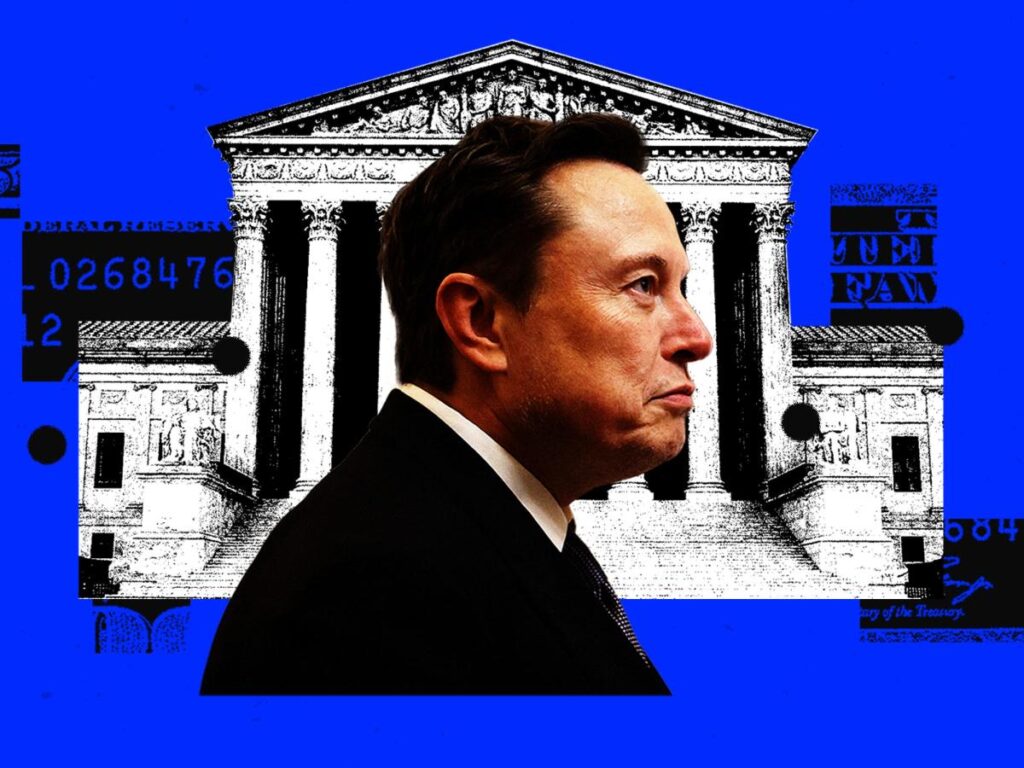Elon Musk and Vivek Ramaswamy are optimistic that a recent Supreme Court decision regarding federal regulations will facilitate their efforts to reduce government spending through their new initiative, the Department of Government Efficiency (DOGE). This initiative, which aims to minimize government waste and streamline federal operations, was instigated by then-President-elect Donald Trump. Following a crucial ruling in June 2024 that overturned the Chevron doctrine, which historically granted federal agencies the discretion to interpret ambiguous laws while crafting regulations, Musk and Ramaswamy believe that the scope for executive action will be broadened, thereby enabling them to enact significant deregulations. They assert that this change will empower their efforts to reduce the federal workforce and eliminate redundant programs.
Despite their optimistic projections, legal experts caution that the Supreme Court’s decision may not yield the intended effects on DOGE’s regulatory goals. The overturned Chevron doctrine, which had previously allowed agencies to adjust interpretations of ambiguous statutes, now requires courts to make these determinations. Gillian Metzger, a constitutional law professor at Columbia Law, emphasizes that this shift restricts the executive branch’s power and complicates efforts for agencies to amend regulations as desired by DOGE. Rather than creating more freedom for executive actions, the ruling might hinder the ability to change existing regulations, making any effort to repeal them more challenging, especially in light of the structured processes outlined in the Administrative Procedure Act (APA).
The implications of the Supreme Court decision become starkly evident in the context of upcoming regulatory rescissions. Nicholas Bagley, an administrative law professor, articulates that once an agency establishes a sound interpretation of a law, it cannot easily alter its stance. For DOGE to change or rescind rules, they would have to navigate the demanding regimens of the APA, including public commentary and justifiable reasoning for any changes. Consequently, the reduction of staff that DOGE advocates might lead to insufficient expertise needed for these substantive regulatory analyses. Therefore, while Musk and Ramaswamy seek to revitalize federal operations, a reduced workforce might paradoxically impede their ability to efficiently manage regulatory processes.
Congressional backing will play a critical role in the success of DOGE’s initiatives. While Musk and Ramaswamy are optimistic about their plans advancing through executive power, they will largely rely on legislative action to implement their vision. Emerging bipartisan support indicates a willingness among lawmakers to engage with DOGE’s proposals. For instance, Democratic representatives such as Jared Moskowitz and Ro Khanna have expressed readiness to explore opportunities for reducing government waste, particularly in agencies like the Department of Homeland Security and the Department of Defense. This newfound political camaraderie could increase the likelihood of legislative measures that align with DOGE’s goals.
Given that federal spending reached $6.75 trillion in fiscal year 2024, with significant costs emanating from health and defense sectors, the urgency for reform seems palpable. Both Congress and DOGE leadership recognize the necessity of scrutinizing spending within high-cost agencies. During recent meetings, legislators discussed the possibility of implementing stringent measures, such as freezing federal hiring and optimizing office spaces to cut unnecessary expenditures. Proposals like the DOGE Act, spearheaded by Senators such as Joni Ernst and Marsha Blackburn, seek to reform the federal workforce and realign operational frameworks to eliminate inefficiencies that have long persisted within government bureaucracy.
Ultimately, while the recent Supreme Court ruling positions Musk and Ramaswamy at a critical juncture to reshape the regulatory landscape, the path ahead is fraught with complexities. The hurdles introduced by legal reforms and the demands of the APA may stymie immediate change. Additionally, the ultimate realization of DOGE’s objectives will hinge significantly on bipartisan cooperation within Congress. The intersection of regulatory reform, judicial oversight, and legislative action will determine whether DOGE can successfully achieve its goals of enhancing government efficiency and curtailing wasteful spending in the face of a shifting political and legal environment.

